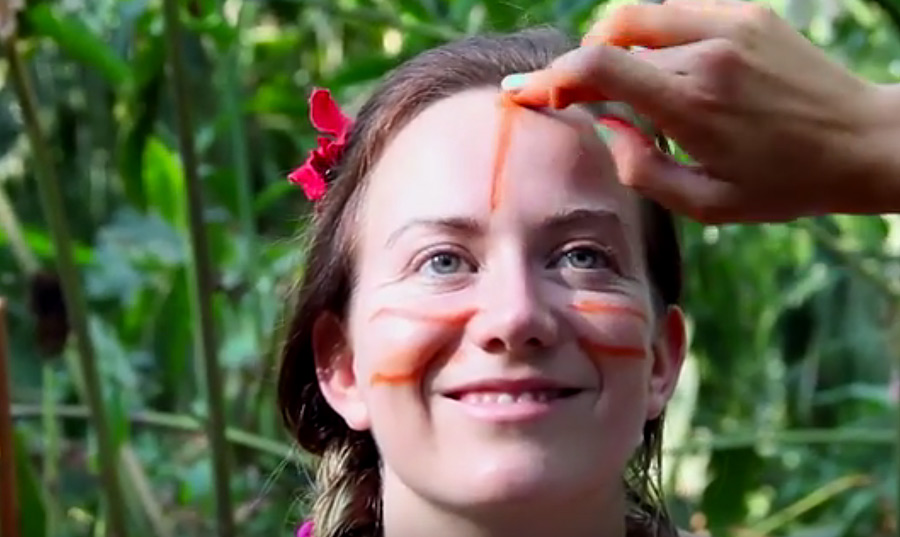Yesterday I happened to walk by a beautiful achiote plant near a hotel.
https://www.instagram.com/p/BZelguDHPWy/?taken-by=david_t_good
The plant has multiple uses, the most well-known of which is its ability to be used as a dye or face/body paint.
You can see it used as a paint in this video from the weird part of YouTube:
I don’t know about you, but I think my awareness of something has certainly been raised.
The uses of this plant are many, according to the World Agroforestry Centre:
Food: In Mexico, Spain and the Philippines, the thin pigmented pulp covering the seeds is used as a condiment.
Fodder: Bixa meal, which remains after extraction of the pigment from the seed, is a useful additive to poultry feed and can replace 30% of the maize in the food. However, the seed embryo contains a poisonous alkaloid, so it is not wise to use the residues from the extraction process directly.
Apiculture: The flowers are a source of nectar for honey.
Fuel: It is said that fire can be started by the friction of 2 pieces of the soft wood.
Fibre: Fibre for cordage has been obtained from the bark of B. orellana.
Timber: The sapwood is whitish and the heartwood light brown or yellowish. The wood is soft, light weight (specific
gravity 0.4), porous, weak and not durable.
Gum or resin: Bark from the branches of the trees yields a water-soluble gum that is similar to gum arabic.
Tannin or dyestuff: The extract from the pigment coating the seeds yields a harmless, non-carcinogenic dye, used as
colouring for food, especially dairy products. This dye was also used by Amerindians as war paint and was used in
dying wool, cotton and silk, but the colour rapidly fades when exposed to light and air. The dye obtained from the seed is used in manufacturing cosmetics.
Essential oil: Seeds contain a characteristic pleasant-smelling oil.
Poison: A waxy substance that has paralytic action on mammalian intestinal parasites is present in the seed coat. Bixin extracted from the seed coat is used in India as an insect repellent.
Medicine: Leaves are applied to the head and to sprains to relieve aches; a decoction is gargled as a cure for mouth
and throat infections. Leaves may also be used in baths to relieve colic or to get rid of worms in children. A root
decoction is taken orally to control asthma. A macerated seed decoction is taken orally for relief of fever, and the pulp surrounding the seed is made into an astringent drink used to treat dysentery and kidney infection. Oliguria and
jaundice are treated using root teas; infusions of root in water and rum are used to treat venereal diseases. The dye is used as an antidote for prussic acid poisoning caused by poorly treated Manihot esculenta. Seeds are used as
expectorant.
Other products: Annatto paste filters out the ultraviolet rays of sunlight, thereby protecting the skin from excessive sunburn.
My friend Eddy has one in his South Florida backyard which his wife uses regularly for cooking.
You can see it in this video.
For most of us, though, the achiote is just a curiosity species. I plan to grow some seeds and tucking some into a future food forest project.
Maybe I can make a pile of leaves and paint faces there while a monkey jumps around.

